#orchard swallowtail butterfly
Explore tagged Tumblr posts
Text
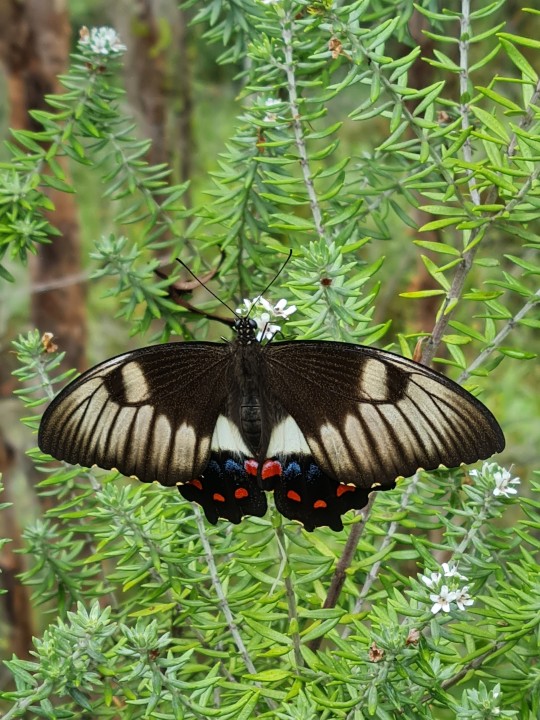
One of my favourite Australian butterflies! Very common in leafy suburbs and bushland alike.
Orchard Swallowtail Butterfly (Papilio aegeus), on Coastal Rosemary (Westringia fruticosa).
#ljsbugblog#bugblr#entomology#insects#lepidoptera#butterflies#papilio#swallowtail butterflies#papilio aegeus#orchard swallowtail butterfly
54 notes
·
View notes
Text
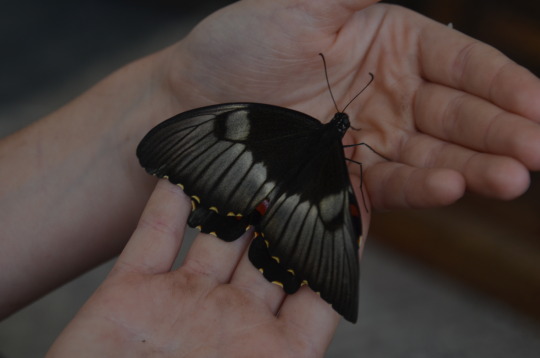
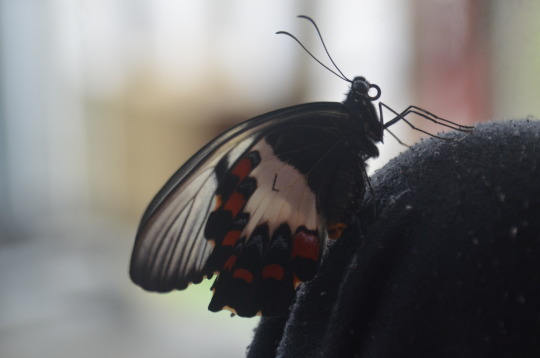
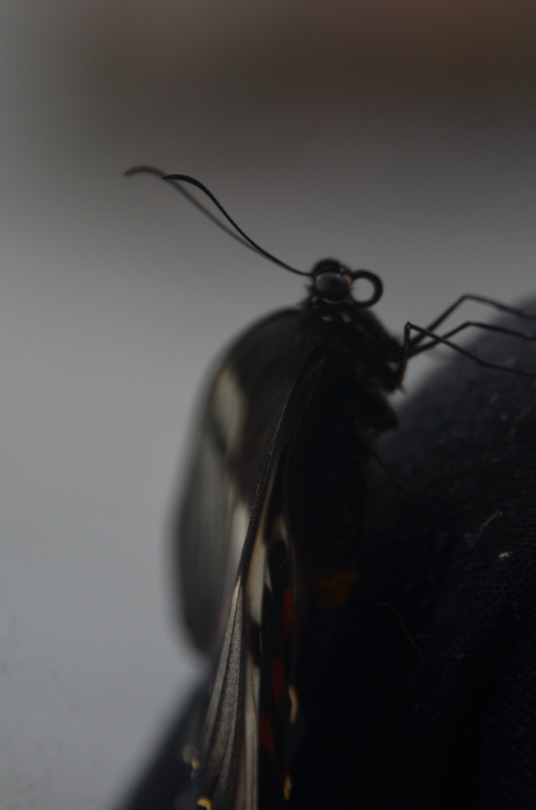
A little Orchard Swallowtail, fresh out of her transition. Lefty Lucy is what our family has ended up calling her, due to the perfect letter "L" on her wing.
#nature photography#animal photo#animal photos#nature photo#animal#animals#nature#photo#photos#photography#photographer#butterfly#butterflies#butterfly photography#orchard swallowtail#interstellars photography
4 notes
·
View notes
Photo

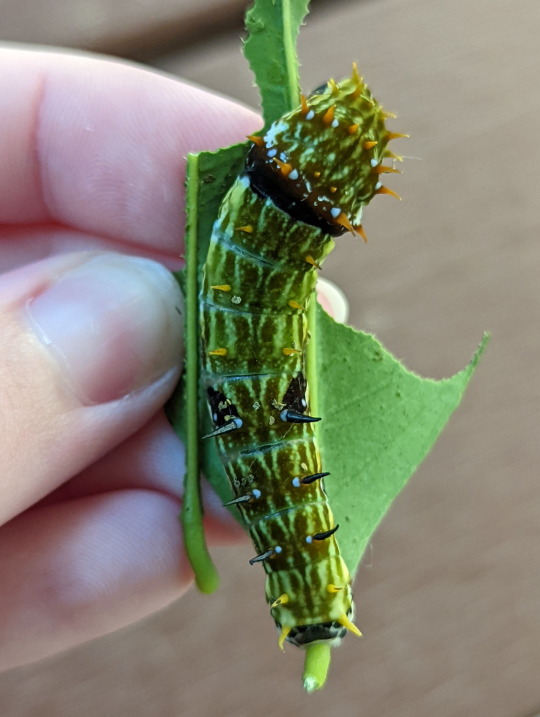
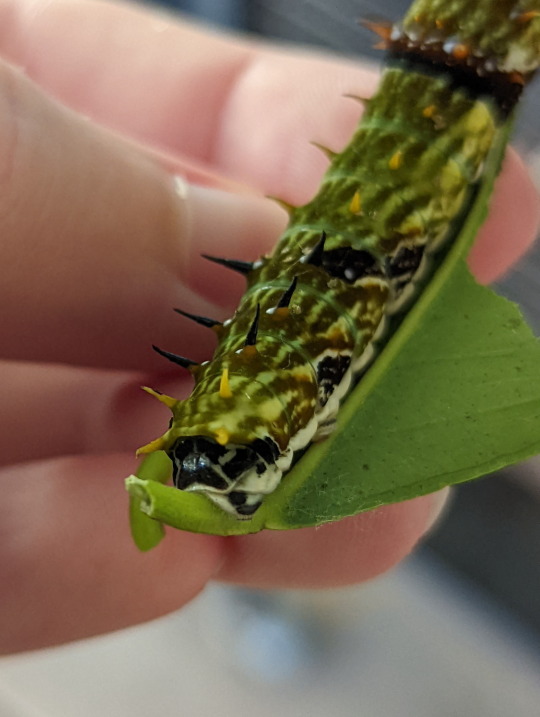
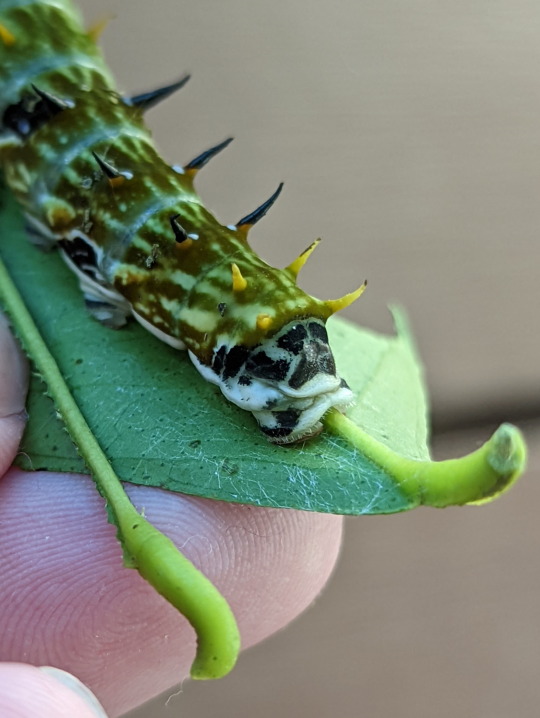

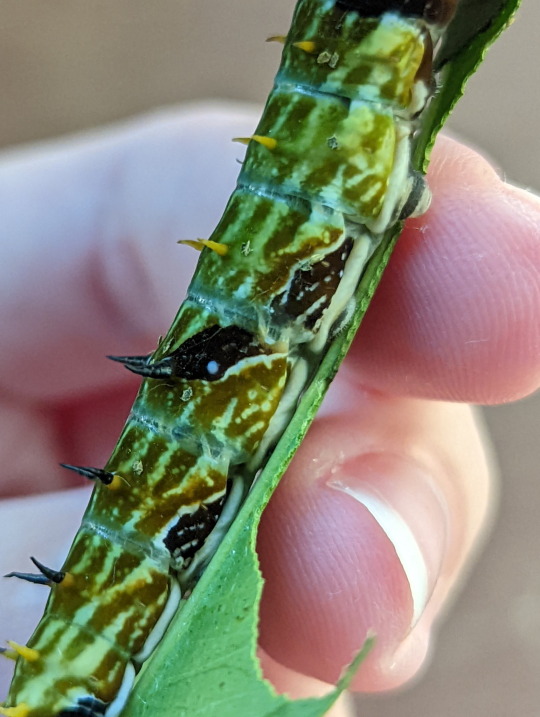

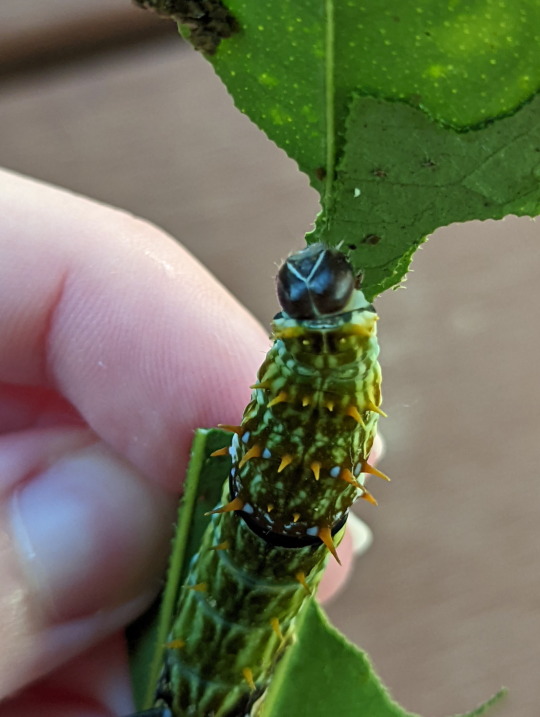
Photos from a failed raising
I collected this specimen off our lemon tree. I’m not entirely sure how it died, but it’s possible disease got the better of it.
Photos of the corpse here
This species is often called the Orchard Swallowtail, as they feed on trees in the Citrus genus (lemons, oranges, tangerines, etc.). There’s a few swallowtail butterfly caterpillars that feed on Citrus, but this species is the most common sight for me.
Papilio aegeus
06/07/22
#Papilio aegeus#Papilio#Orchard Swallowtail#citrus swallowtail#swallowtail butterflies#Menelaides#Papilionini#Fluted Swallowtails#Papilioninae#Swallowtails#Papilionidae#Papilionoidea#butterflies#Lepidoptera#Lepidopterology#caterpillar#caterpillars#larvae#Larval stage#bugs#bugs tw#bugblr#insects#Insecta#insectblr#insects tw#entomology
18 notes
·
View notes
Text




Behold this absolute beauty of a butterfly I raised from a tiny caterpillar.
She’s a female orchard swallowtail. They routinely lay eggs on my lemon tree which emerge at certain times of the year but unfortunately their caterpillars are extremely prone to being parasitised by tachynid flies so I usually check frequently around the times the eggs hatch and collect any caterpillars I find to raise indoors then release as adults.
If the weather when they emerge as adults is bad (raining, too windy etc) I keep them in an old fish tank with sticks, paper towel and a bottlecap of blossom nectar until the conditions will be suitable for at least 2 days in a row.
I only found 2 caterpillars this season and I’m currently waiting on the other chrysalis to finish up which if it follows the same timeframe as this female did should be any day now.
———————————
Damn that is impressive. I tried to raise a caterpillar once but he never emerged from the cocoon. Very stunning specimen you have there!
70 notes
·
View notes
Text
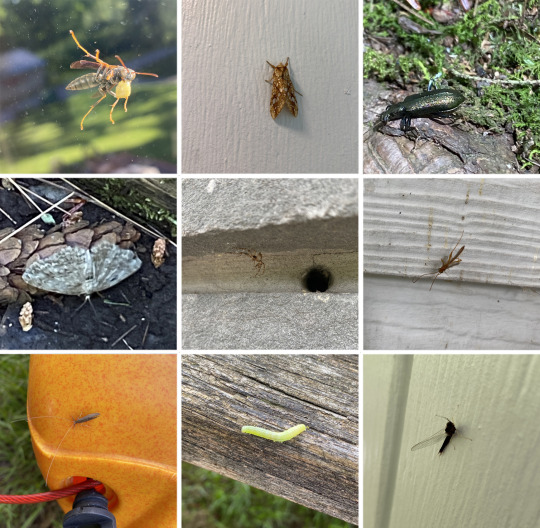

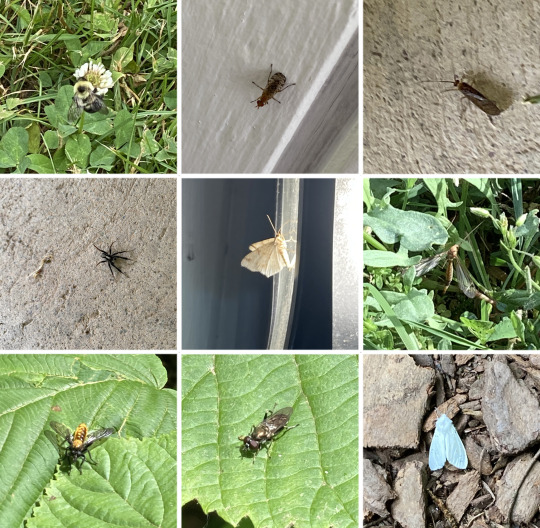


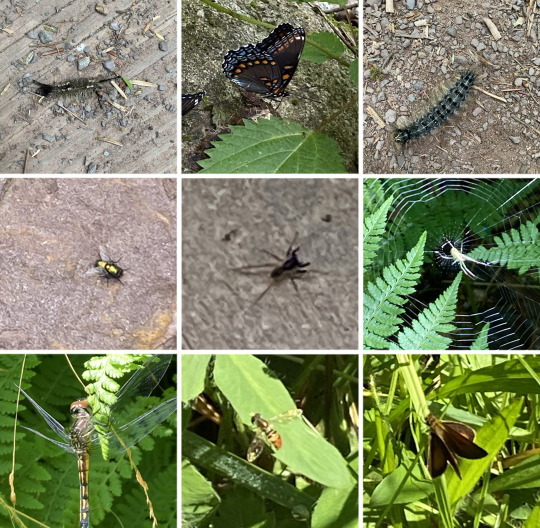
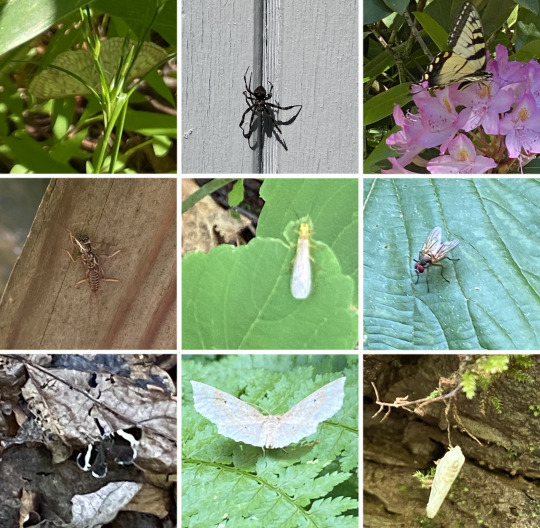
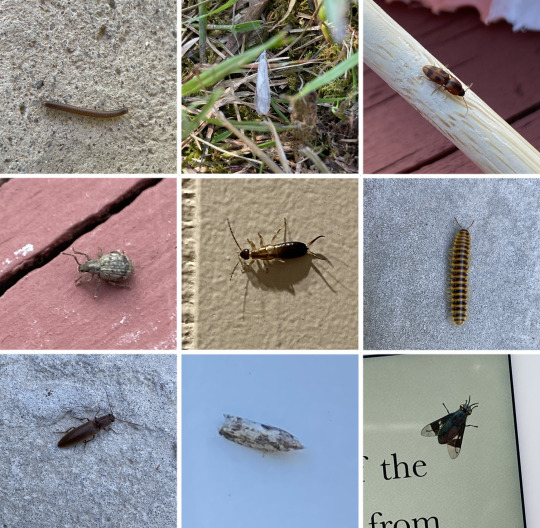
Zuzu's bug-ventures June 8-16, 2024 (insects/spiders from a state park in northeast Pennsylvania) (re-uploading because of file size issues)
I figured I would make a collage after getting so many! A couple of the above photos have duplicates, so all in all I believe I found 65 distinct kinds. I'm still working to ID some of them, but all the ones I think I have ID'd are under the cut. Anyway, it was truly a fun experience. Maybe next time I'll have a camera that isn't a shitty phone!
You can see full size photos of most of these here.
IDs under the cut
Just a note, I'm not 100% on any of these. My IDs are speculative based on google searches, reddit, and so-on. If you think something is wrong, PLEASE let me know!
Also, each image has 9 insects/spiders in a grid. I will be referring to each grid of 9 insects/spiders as a single image below, and identifying all 9 based on rows within the image. If that makes sense. Hopefully it does!
Image 1 (first row left):
Top row (from left to right): Northern paper wasp (I'm told it's carrying caterpillar meat); Hickory tussock moth; Ground beetle of some kind (could not ID)
Middle row: Fall cankerworm moth; Barn spider; Red ichneumon wasp
Bottom row: Long-horned caddisfly; Copper underwing caterpillar; Brush-legged mayfly
Image 2 (first row right):
Top row: Very loud very big bee (could not ID); Common blue mud dauber wasp; Harvestman spider
Middle row: Limoniid crane fly; Firefly; Hoverfly
Bottom row: Elegant grass-veneer moth; Tiger crane fly; Western honey bee
Image 3 (second row left):
Top row: Two-spotted bumble bee; Marsh fly; Yellow-collared scape moth? (could not ID)
Middle row: Wolf spider (male); Macaria moth; Tipula lunata (type of crane fly)
Bottom row: Robber fly; Brown-toed forest fly; Virginian tiger moth
Image 4 (second row right):
Top row: Blue dasher dragonfly? (could not ID. Dead in spider web); White admiral butterfly; Chalk-fronted corporal dragonfly
Middle row: Clubtail dragonfly? (could not ID); Hemlock borer beetle; Eastern tent caterpillar
Bottom row: Another Tipula lanata crane fly; Double-banded grass-veneer moth; Horace's duskywing butterfly
Image 5 (third row left):
Top row: Cabbage white butterfly; Spongy moth caterpillar; Dragonfly exoskeleton (could not ID)
Middle row: White-striped running crab spider; Jumping spider (could not ID, but yes there is a spider in this photo!); Orchard orbweaver spider
Bottom row: Soldier beetle; Fortunate wave moth; Another white admiral butterfly
Image 6 (third row right):
Top row: Tussock moth caterpillar; A third white admiral butterfly (this is the last one I promise! They just have so much variation!); Another spongy moth caterpillar
Middle row: Common green bottle fly; Eastern parson spider; Another orchard webweaver spider
Bottom row: Blue dasher dragonfly (possibly female); Calligrapher fly; Dun skipper butterfly
Image 7 (last row left):
Top row: Another fortunate wave moth? (could not ID); Orbweaver spider of some kind (Could not ID); Eastern tiger swallowtail butterfly
Middle row: Stonefly exoskeleton; Ontario sallfly; Lesser house fly
Bottom row: White-striped black moth; Pale metarranthis moth (this one is my favorite find); White planthopper? (could not ID)
Image 8 (last row right):
Top row: Millipede; Immaculate grass-veneer moth; Flat wireworm beetle
Middle row: Twobanded Japanese weevil (WEEVIL TIME!!); Earwig; Bob's yellow and black millipede
Bottom row: Click beetle; Sod webworm moth? (could not ID); Deer fly
And that's it! Again, let me know if I made mistakes or if you know any of the ones I couldn't ID.
#insects#insect photography#bugs#insect identification#tw insects#tw spiders#my photos#memories;#Zuzu's bug ventures
11 notes
·
View notes
Note

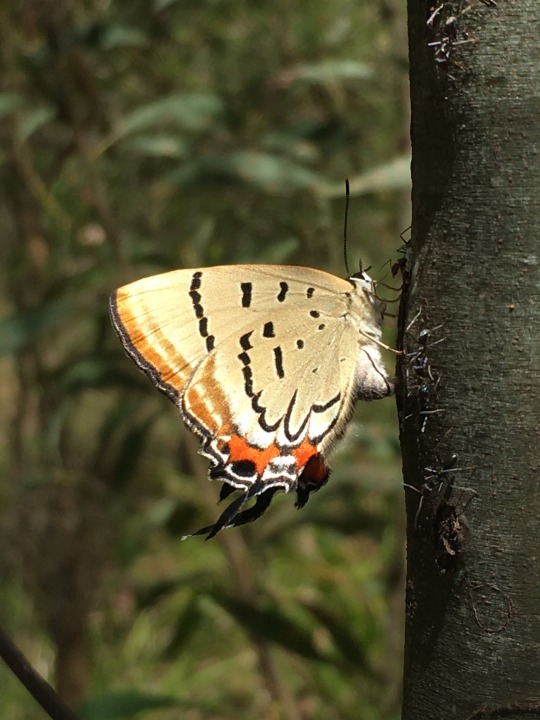

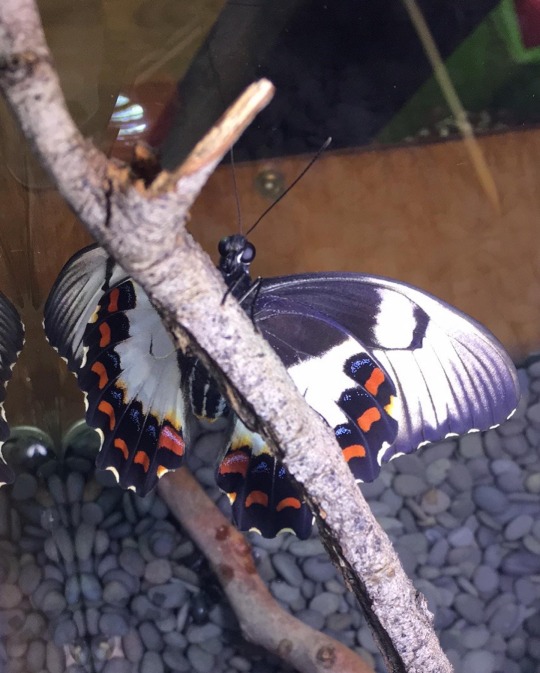
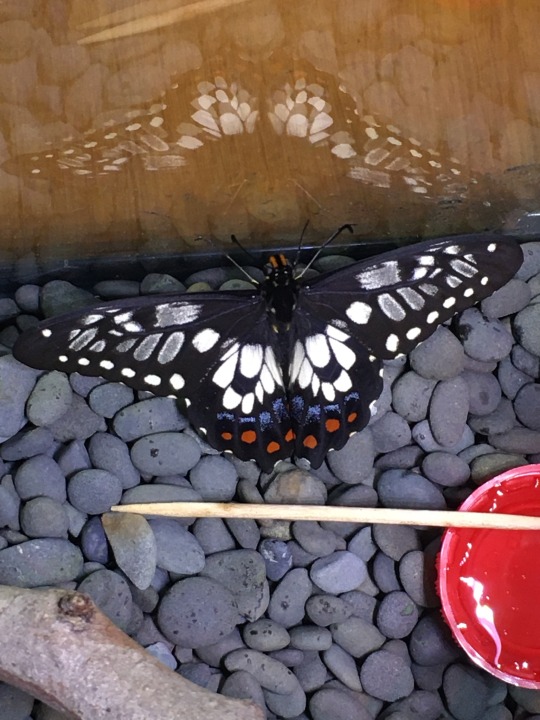


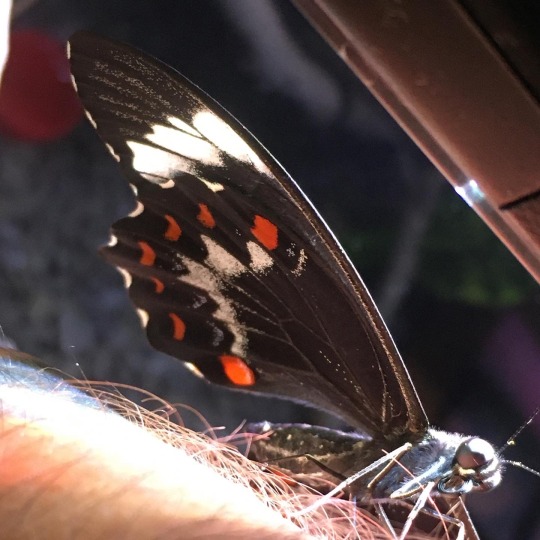


Showing off some cool butterflies and moth here.
Photo 1: Privet Hawkmoth I encountered chilling on the brick wall on my front porch one afternoon. First one I’ve ever seen and I haven’t seen another one since.
Photo 2: Imperial Blue Butterfly. I encountered a swarm of these while walking one day. The upper surface of the wings is a semi-metallic baby blue color. The butterflies were swarming a wattle tree alongside black ants. Turns out this species used these ants as ‘babysitters/guardians’ for their eggs and caterpillars with the ants protecting the eggs and caterpillars in exchange for a sweet nectar the caterpillars produce. The little ‘tails’ on the end of the wings were being wiggled about and it seems this is a defence thing to fool potential predators into thinking the rear end is the head.
Photos 3 & 4: A female Orchard Swallowtail butterfly I raised from a caterpillar. I released her after ensuring she was good and ready to be on her way after emerging. I managed to catch one of the females emerging from her chrysalis on video so if you’re interested in checking that out I can @ you in a post of it.
Photos 5 & 6: A Female Dainty Swallowtail butterfly I also raised from a caterpillar, again released once she was ready to go.
Photos 7 & 8: A Male Orchard Swallowtail butterfly again raised from a caterpillar and released once he was ready. From the same group as the other caterpillars I collected which was 6 individuals. 1 didn’t make it past a pupa and of the 5 remaining 4 emerged female and this guy was the only male.
Photo 9: A Granny’s Cloak moth I found in my garage. Apparently these moths like to come into sheds and garages during the day to rest.
Photo 10: I believe this is a type of Grass Dart. I like these butterflies because the way they position their wings reminds me of tiny fighter jets.
a nice collection of leps
80 notes
·
View notes
Text
November 3rd, 2023

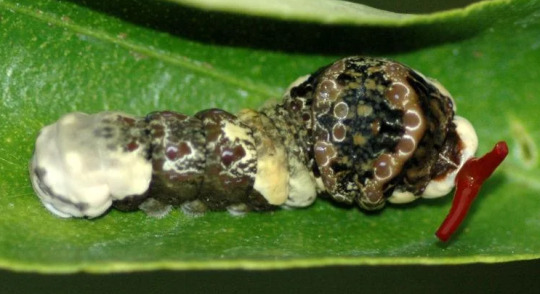
Giant Swallowtail (Papilio cresphontes)
Distribution: Found across the United States, up to southern Canada and down to Mexico, Jamaica and Cuba.
Habitat: Mainly found in deciduous forests and citrus orchards.
Diet: Adults feed on nectar and the liquid from animal waste; plants fed on include lantana, azalea, bougainvillea, soapwort, dame's rocket, goldenrod, Japanese honeysuckle and milkweed. Caterpillars feed on the leaves of plants in the citrus family.
Description: The giant swallowtail's larva is also called the orange puppy due to the fact that it's a pest of citrus trees, including orange trees. In order to protect itself from predators, the caterpillar camouflages itself by imitating the appearance of bird or lizard poop. If this doesn't fool a predator, it has a trick up its sleeve—or more accurately, its head; it can deploy an osmeteria, which is a brightly-colored Y-shaped growth, whose appearance is often accompanied by a strong, foul odour. This only really works to startle smaller predators, though, such as lizards and other insects.
Due to global warming, the giant swallowtail's range has gradually expanded northward. However, they're still only able to overwinter in areas of the deep south. They can be spotted fairly easily—adults have a wingspan of up to 19 centimetres, making the giant swallowtail the largest butterfly in North America!
(Pictures by D. Gordon E. Robertson and Lanare Sevi)
24 notes
·
View notes
Note
*awkward finger guns* Can I get a butterfly request for my oc Elana?
Of course you can! She is the first OC I have received, so this is exciting! In response to this post!
Since Elana is Hawaiian I had to get her a butterfly that can be found in Hawaii! And there are actually very few butterflies that can be found in Hawaii. As a matter of fact, there are only TWO butterflies that are native to Hawaii! I could go with one of these two, but I think a butterfly with subtle blue accents, for a connection to her beloved Martin, will suit her best! So, for Elana we have the….
Xuthus Swallowtail Butterfly (Papilio xuthus)!
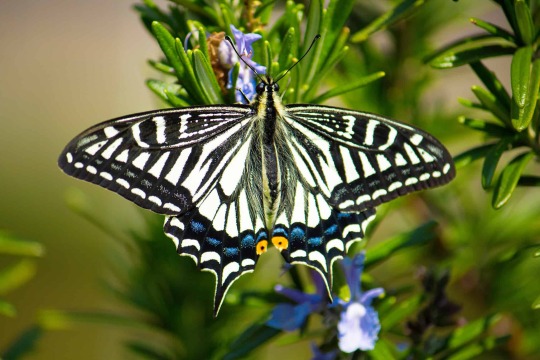
Also called “Chinese yellow swallowtails” or “Asian swallowtails,” these butterflies were introduced to Hawaii in the early 1970s. Since this initial introduction, their population numbers have grown and they can be found in many environments, including urban areas and in proximity to citrus orchards.
A couple (more) interesting tidbits about this amazing creature!
1)The Xuthus Swallowtail has color vision (they can see different colors) and color constancy (they can recognize differences in color with different types of background lighting)! These unique abilities aid the butterflies in foraging, because they can locate their preferred food sources in spite of the level of lighting in their environments. So this butterfly, like Elana, has the ability to “see” the truth….even if the truth for these butterflies is just their meals, lol.
2)The females of this species have maternal instincts like Elana! The females mate with multiple male butterflies to ensure that they will produce greater numbers of eggs with enhanced genetic diversity. And, when it is time for the females to lay their eggs, they consider all factors of their environment to ensure the safety of the eggs, such as making sure there are adequate food and light sources for the caterpillars once they hatch.
You may request other butterflies, just note it may be a bit before I complete them!
#wild kratts#wild kratts fandom#elana maheloma#wild kratts oc#wk oc#butterflies#butterfly#tw insects#tw bug#tw bugs#animal facts#tw mating mention#tw mating patterns
13 notes
·
View notes
Text
Museums are absolutely happy to talk to you about stuff or answer questions.
Same goes for other organisations focused on specific topics as far as I’ve found.
The Australian museum helped me ID an insect id found in my backyard but wasn’t sure of as there were a few species that looked very similar. So I send them some photos and they got right back to me with an ID (and compliments on the photo quality)
I’ve contacted a mushroom and fungi organisation about an unusual mushroom that frequently pops up in n front garden. Recieved a very excited response because it turned out this mushroom was a weird mutated version of something and was later asked by this organisation if they could use my photos of that weird mushroom in their database.
I also routinely talk with an elderly guy who runs a big database of Australian moths and butterflies if I come across anything interesting when I periodically raise butterflies and moths. Some of my photos and discoveries about a few species are published in his database sites relevent pages as a few years ago I was in contact with him after I found and then raised and documented an individual of a rarely documented species, and ended up discovering two previously unknown food plants for it then more recently I made a discovery with orchard swallowtails about a method that can determine the sex of the adult butterfly why it’s still in a chrysalis (that being green colored chrysalis will produce females while brown colored chrysalis will produce males)
So if you wanna know something about a thing or ask about a theory you have/talk about some observations you’ve made about something send that email.
Who knows, you might find you’ve come across something unusual or new.

40K notes
·
View notes
Text
Black Hat Research - Destructive Larvae
For my black hat I wanted to depict how the larvae of butterflies and moths can actually end up becoming pests that ruins crops and vegetation, as well as invasive species that threatens native forests. The larva stage is the butterfly's and moth's most destructive stage, as larvae eat leaves and stems of a wide variety of plants and can kill the plant.
Orchard Swallowtail Butterfly - in some areas their larvae are considered pests as they eat through citrus plantations.
Cycad Blue Butterfly - they will eat all types of foliage but only to a small degree. Nevertheless, they can still cause damage to plants and vegetation. Severe infestations can cause the loss of all new growth and the heart of the plant may be completely eaten away.
Cabbage White Butterfly - The most destructive species. Cabbage white caterpillars are referred to as Cabbage worms. Cabbage worms are known to cause significant damage to cabbage, broccoli, cauliflower, radish, turnip, kale, bok choy, brussels sprouts, collards, mustard, kohlrabi, arugula, and nasturtium plantations.
Five-Spotted Hawkmoth - These larvae are a major pest. They mainly eat through tomato plantations.
Forest Tent Caterpillar - The larvae are a threat to the ecosystem as abundant numbers of them can defoliate hundreds of acres of trees.
Gypsy Moth Caterpillar - Invasive species in in the Northern Americas, especially in southern Canada. These caterpillars strip hundreds of acres of trees bare of any foliage.
Oak Processionary Moth - This is considered a high impact invasive species in Ireland. The caterpillars feed on leaves and can cause severe defoliation leaving trees bare.
Box Tree Moth - Originating from East Asia, these larvae are an invasive species to North and Central America. The caterpillars feed primarily on boxwoods, causing significant negative impact for the United States nursery industry. They are also known to feed on Euonymus and Holly.
0 notes
Text
A Brief Romp in Isca's Backyard
(date: 6th March, 2024)
we're past the worst of Tropical Cyclone Season, which reminded me that perhaps the local butterflies would come back -- here's what i've found this week!
note: all photos were taken on my Samsung Galaxy A30.

firstly, this tiny (approx. 4mm) little guy in its early instar! It's definitely a member of Papilionidae, though I'm not fully sure that it's an orchard swallowtail (P. aegeus), because its colouration is a little different from other early instars I've seen so far. either way, i'm keen to watch how it develops!


this bigger lad (left) is a P. aegeus, but this one's in its late instar! sometime soon it should turn into a pupa, just like its companion (right) hanging out on another branch!

while I was outside, I spotted this poor orange just split open. perhaps someone or something couldn't wait for it to ripen up first. it's not a big deal, though -- our orange tree is ridiculously prolific.

while I was outside the other day, we found a small litter of eastern red lacewings (Cethosia cydippe) on some passionfruit vine growing under the orange tree. I didn't have my phone on me then, and when I went looking for them today, I couldn't find them as mum had pulled out the vine. so instead, I opted to do a drawing of one. (note: artist's impression was drawn in Clip Studio Paint.)


I also spotted these two beetles. I don't actually know what the one on the left is -- but the one on the right is definitely an Asian Ladybeetle (Harmonia axyridis). they were both sitting on different parts of the same tridax daisy (Tridax procumbens), which is one of the many invasive plants in my area (and in our backyard).
#iscabird's backyard#talking about things#entomology#lepidopterology#bug watching#caterpillar#photography
0 notes
Photo



Visitor to the cemetery
(on my travels)
Doesn’t it know it’s almost Halloween? Orchard Swallowtail Butterfly at Mackay cemetery,
68 notes
·
View notes
Text
It was full dark by the time I stopped working last night (RIP dinner) so I didn't take any pictures of the new work, but it's a beautiful day today.

Freshly planted celosia and pansies and one of the great big bushy parsleys I was excited to find. Historically I get basically no parsley because it's still small when the black swallowtail caterpillars hit it and then it's gone. And I'm sure not gonna kill black swallowtail caterpillars. I might pet them tho. They don't like it but they're just so cute; call it the price I charge for my parsley.

Found this sweetheart at the local orchard stand. Never seen it before. Sold as Snow in Summer, and it's perennial too. I'm delighted.

Yesterday's unknown fairly certainly id'd as swamp milkweed, speaking of butterflies. (Monarch, this time.) Yay! Plus there are actually four of them, now that I look in the sun. And the tentative "Cardinal flower" I now think is probably beardtongue penstemon, actually, and I only have one actual cardinal flower. But hey, one makes more.

And I squeezed this sweetheart of a pale pink English daisy in between my glorious columbine and a volunteer calendula about to bloom.
These beds are really truly almost full of things that are there intentionally, now. Some are annual, but of those, several reseed. Really getting where I want to be.

Worked in the front garden this evening. Reginald came and visited me. Got a total of eighteen plants in the ground in the front, and did some potting up of succulents in the back.

Everything in this corner is just lovely. My columbine is even more beautiful this year than last, and the yarrow and bee balm have spread and grown so much in this, their second year. I'm so excited to see them bloom. I think the natural purple bee balm is further down and we have the red in this photo.

My calendula is entirely self seeded now, but this one plant must have found a sheltered spot, because it's far outstripped the rest and bloomed such a vivid orange that it kinda screws with my camera. That, and one escape dandelion.

In the back left are the many seedlings of funky-colored echinacea. The plants were pretty puny last year, but this year they're coming up thick! There was a red variety and... Something else? And an absolutely wild one called "green twister" that had pink and green flowers. I grew that one from seed last year, and an very eager to see if it's still there, because it didn't bloom last year. I do wish my actual echinacea purpurea had spread so much, but I only see a couple new plants in that area.
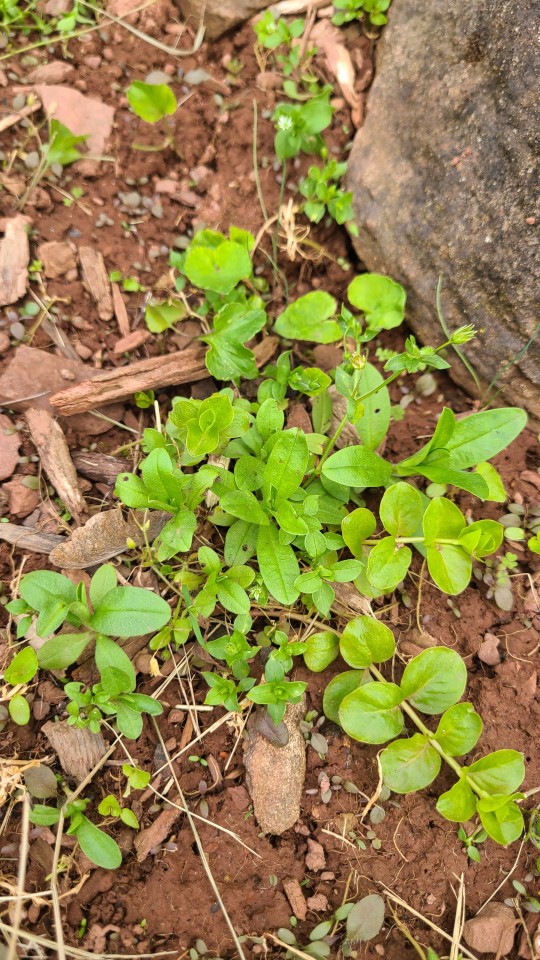
This was a surprise find when I was weeding. There are two next to each other and none anywhere else, so it's a sure thing that I planted them. I *think* it's St John's Wort. Don't actually remember planting that so uh... Sweet.
I won't make you stare at a few leaves trying to figure out what I'm trying to show you, but I will say that within the last week I've seen new growth of a bunch of unusual natives I'd pretty much written off as lost money. I ordered them in late fall last year, and then because of The Sick never getting better until this year, I only got any of them in the ground by--i genuinely think it was December. They died back to the ground by mid-January, and I'd put them down as (quite a bit of) wasted money. But now I find myself pretty unmistakeably in possession of four Cardinal flower plants, six Rattlesnake Masters (best plant name ever?), two wood betonies, and at least four things that are definitely deliberate but which I cannot yet identify. Penstemon? I don't know, but I'm thrilled. I thought it was all lost, but in fact it's almost all growing! Unearned blessings for sure.
I lied, I will make you stare at leaves.
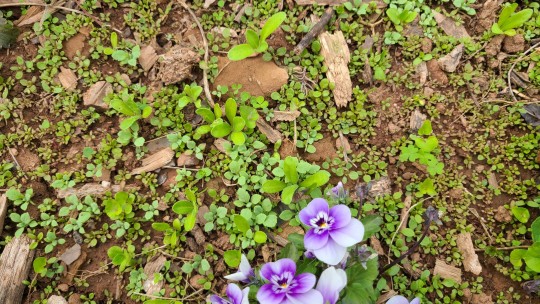
Seedling bonanza! Poppy, calendula, wild violet, and in the bottom right a massive concentration of something that's far too small to id but given the placement might be a return of the toothache plant. I am intimidated by the future task of thinning. But what bounty!
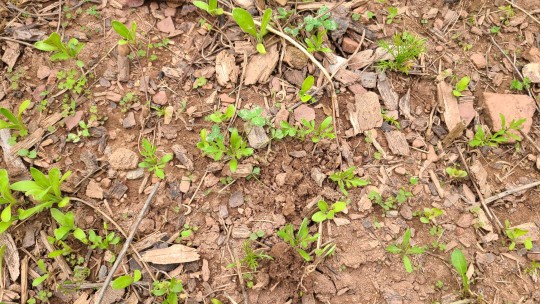
More seedling mania. Here, calendula, marigold, and a few chamomile. I'd expect there to be a LOT of reseeded coreopsis here too, but if so I can't id it yet.
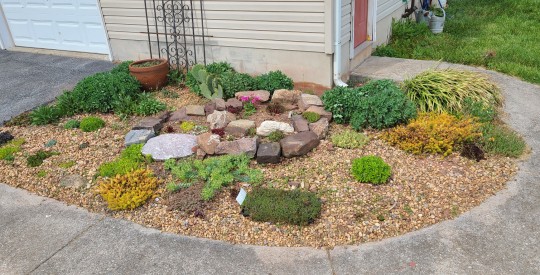
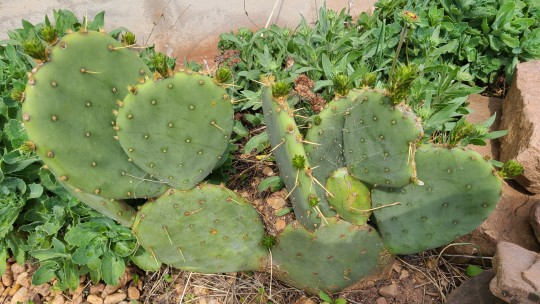
My succulent garden continues to be one of my great joys. And just look at all that new growth on my prickly pear! It would be amazing to get flowers and fruits this year. Just think, this was two pads in a pot last spring! By next year I'll have to start harvesting just to keep it back.
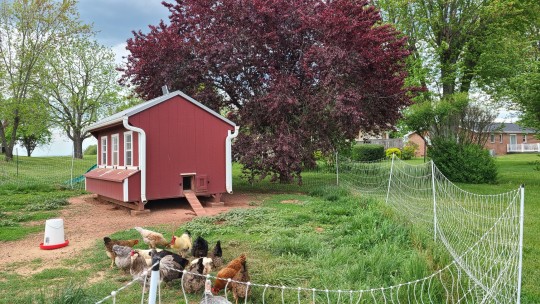
Tree pretty.
29 notes
·
View notes
Photo
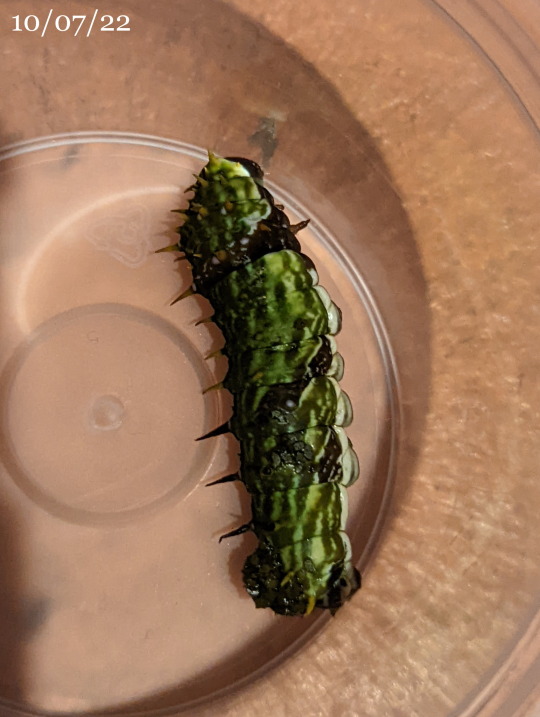
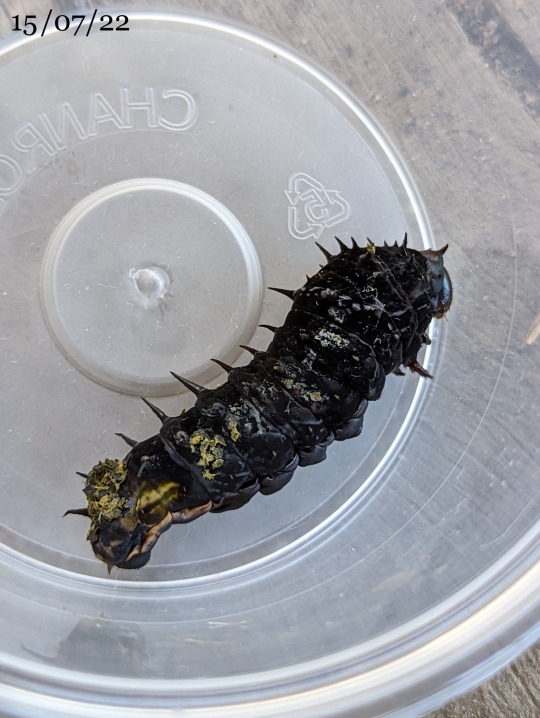
Decay of a Dead Caterpillar
Not the most pleasant post, but I was curious to see what would become of the body.
Photos of the live specimen here
The caterpillar suffered all the symptoms of disease that I am aware of. Sudden diarrhea, weakness, eventually leading to dropping dead completely. Caterpillars are highly susceptible to disease, so washing your hands thoroughly is important.
The corpse turned completely black, and developed a hole near the rear of the caterpillar. I’m not sure why this hole appeared.
Papilio aegeus
10/07/22 - 15/07/22
#dead tw#Papilio aegeus#Papilio#Orchard Swallowtail#citrus swallowtail#swallowtail butterflies#Menelaides#Papilionini#Fluted Swallowtails#Papilioninae#Swallowtails#Papilionidae#Papilionoidea#butterflies#Lepidoptera#Lepidopterology#caterpillar#caterpillars#larvae#Larval stage#bugs#bugs tw#bugblr#insects#Insecta#insectblr#insects tw#entomology
9 notes
·
View notes
Text




The second of the two orchard swallowtails I was raising emerged today.
This one is Male. I have a theory about a possible way to determine the sex of the butterfly before they emerge and so far what I’ve been seeing in the ones I’ve raised over the last two lots my theory holds up.
I plan on collecting and raising more to further test my theory and see if the results are consistent 100% of the time.
—————————
EPIC AND BEAUTIFUL BEASTS!!!
38 notes
·
View notes
Photo

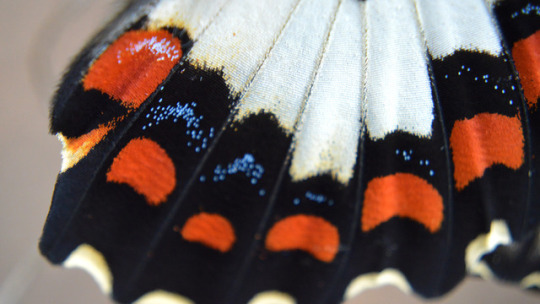
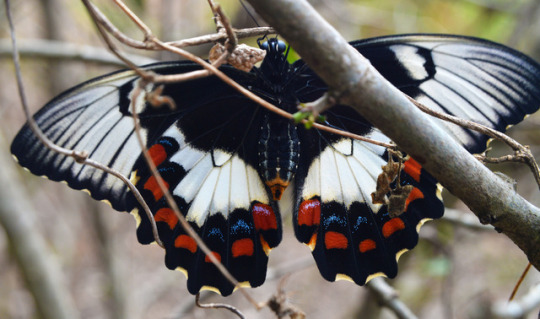
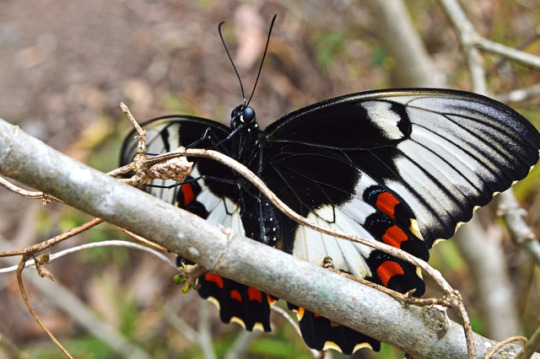
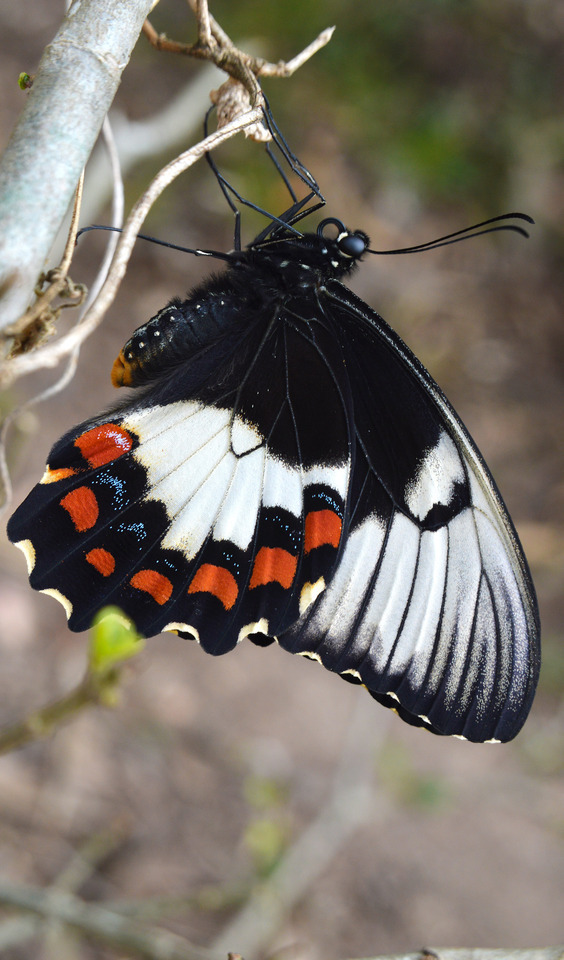

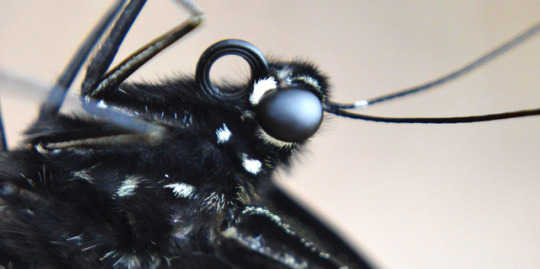
An Orchard Swallowtail (Papilio Aegeus) dries its wings after hatching from its chrysalis on a beautiful Spring day. Found on the Far South Coast of NSW.
This butterfly was huge! A really beautiful thing to see.
#papilio aegeus#lepidoptera#butterfly#orchard swallowtail butterfly#swallowtail#winged#winged friends#bugs#insects#recording insects#entomology#beautiful#outdoors#nature#nikon photography#nikon d3200#nikon#macro#nature photography#Orchard Swallowtail
986 notes
·
View notes